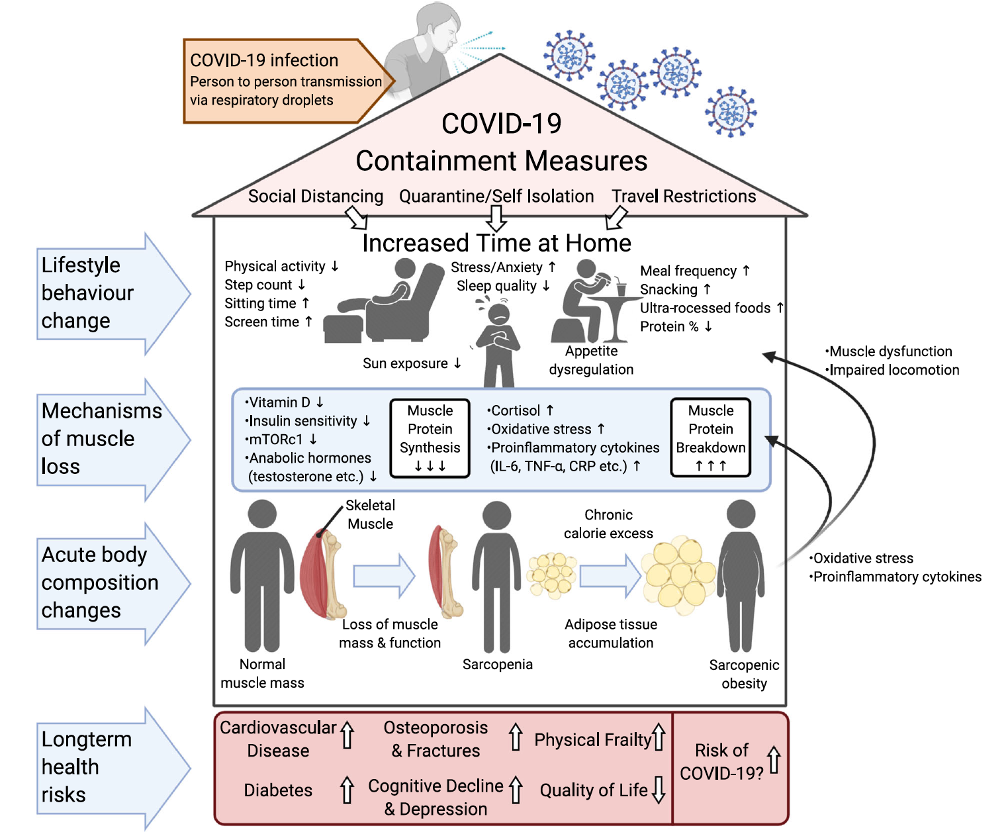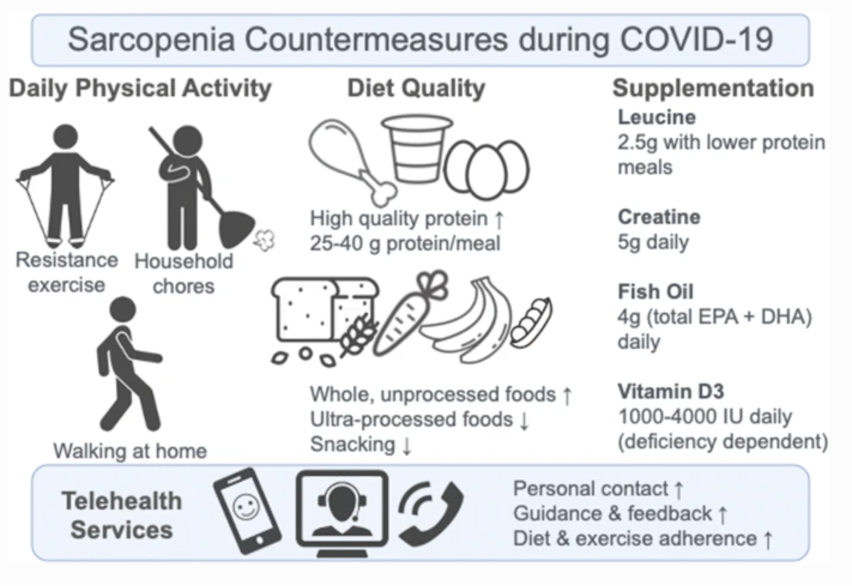The COVID-19 pandemic caused by SARS-CoV-2 continues to be an important problem for health, the economy, and the global society. Since its appearance in December of 2019, a great amount of data, evidence, diagnostics, and treatment options have arisen.
Christmas time will be atypical this year because of the coronavirus crisis. Recently, scientists have noted that measures even more restrictive will be adopted in December, events will be cancelled, home lockdowns will take place, and limits will be placed on family meetings and on social contact in general. These are measures that, without a doubt, will once again modify our nutritional and lifestyle habits.
Alejandro Monzó – Neolife Nutrition and Nursing Unit
Mortality rates are higher amongst those over 60 years old with prior conditions.
Currently, there are no registered medicines to prevent COVID-19 and there is also not a safe vaccine at the moment. Treatment is based mainly on support therapies and treating symptoms, as well as aiming to prevent respiratory insufficiency. As preventative measures, the use of face masks, hand washing, and respecting social distancing rules have all yielded results. Currently, a feasible, tried-and-true way to lower the rate of contagion seems to be the strict measure of a lockdown for the general population (1,2).
In Spain, the autonomous communities will have to try to be restrictive to control the pandemic’s curve at Christmas. This can be done by cancelling social events, limiting the number of people in family meetings, and avoiding closed spaces without ventilation. Home lockdowns have proven to be a good tool to combat the virus’s propagation (3). Nevertheless, this solution is a double edge sword that, unfortunately, can seriously compromise people’s health because of the habit and lifestyle changes that it implies.
It must be remembered that good health is the result of a set of different factors. Eating habits, physical activity and exercise, rest, the environment, the control of stress, our social relationships, our management of emotions, even our gut microbiota (amongst many other factors) play a key role for reaching optimal health.
Firstly, governments are applying lockdown, isolation, and social distancing measures that lead to a prolonged period of time at home. This has yielded reductions in physical activity and changes in dietary intake and is even more noticeable now in this Christmas season as foods rich in calories, sugars, and fat have a greater presence at home (4). In this context, the risk of sarcopenia increases, a deterioration of muscle mass and muscle functions (more prevalent in older populations), as well as increases in body fat. A new study published in the scientific journal GeroScience shows the health effects and consequences of home confinement restrictions due to COVID-19 (Figure 1), where these changes in body composition are associated with a number of chronic lifestyle diseases like cardiovascular diseases, diabetes, osteoporosis, frailty, cognitive impairment, and depression (5).

The generalized loss of skeletal muscle mass and strength is aggravated as a consequence of inactivity and a lack of exercise. The authors note, in addition, that the elderly population suffers from additional problems such as an increase in falls, fractures, reduction of mobility, greater deterioration, and a higher rate of mortality in general. Nevertheless, one of the most noteworthy points of the study is the risk of sarcopenic obesity (people who are losing muscle and gaining fatty tissue at the same time), an added risk factor for chronic diseases that does not only shorten life expectancy but also compromises quality of life (5).
Regarding diet, home confinement and the Christmas period can bring about changes in food choices and diet quality. These changes in eating habits, along with chances in appetite regulation, can increase the risk of weight gain (an average of 3 kilos of fat has been estimated) or, on the contrary, of weight loss (mainly because of the loss of muscle mass) (4,5). The authors even discuss the risk of the immune system working less effectively. In addition, a new Spanish study published in the journal Annals of Medicine has demonstrated that the level of blood sugar helps to predict the prognosis of patients in the hospital with COVID-19, even in those who are not diabetic (6). Therefore, specialists note that hyperglycemia is a risk factor and recommend controlling blood sugar levels. Also worthy of mention are other recent discoveries, like the connection between a deficiency in vitamin D and greater risk in the event coronavirus is contracted A recent study published in the journal Aging Clinical and Experimental Research shows that those countries with greater levels of vitamin D on average have a lesser number of deaths from the virus; therefore, healthy levels of vitamin D could contribute to reducing the risk of respiratory infections (7).
Likewise, the Christmas season along with social isolation could cause emotional and sleep problems. It has been shown that psychological factors, drowsiness, social isolation, and anxiety may play a considerable role in the loss of muscle during the pandemic (5). This could be due to the pandemic’s effects on healthy behaviors like irregular eating habits and physical exercise regimes coupled with stress, which, in turn, are associated with sleep alterations, less time sleeping, and insomnia, which are all affecting general health (4,5)
Another of the key health factors is the advancement and knowledge of gut microbiota. Scientists define microbiota as the set of microorganisms present in a set environment like the intestinal tract (8). It is important because it undertakes multiple defense tasks, as well as nutritional functions, and it influences mood and behavior. Researcher today consider it as if it were an “organ.” Recently, Spanish scientists have undertaken a research project to find the immunological mechanisms through which gut microbiota may protect the body from the coronavirus and reduce the seriousness of symptoms. It has been verified that SARS-CoV-2 can be detected in stool and its receptor is also expressed in the cells of the intestine and colon (9). Therefore, it is important to always consider ahealthy diet a priority, even more so during this Christmas season. What we eat nourishes us and the billions of microorganisms that live in our intestine.
Lastly, during Christmas, following the recommendations of the Spanish Academy of Nutrition and Dietetics against COVID-19 (10), it is important to increase the consumption of fruits and vegetables due to their richness in vitamins, minerals, fiber, and antioxidants and because of their role to combat oxidative stress brought on by a possible loss of muscle. Likewise, their consumption is important to keep the immune system working at its best. Include quality sources of protein, like legumes, meats, fish, and eggs to avoid sarcopenia. Also avoid the consumption of non-healthy fats contained in industrially processed and ultra-processed foods and go for a greater amount of healthy fats like olive oil, dried fruits, fish oils, and avocado (amongst others) due to their energizing and antioxidant properties. Other recommendations include keeping metabolically active; that is, avoiding a sedentary lifestyle and doing activities like walking, physical training at home, cleaning, etc. to guarantee body weight maintenance at Christmas time. Something no less important is to keep up social contact with our loved ones and family members despite the restrictions. This can be done thanks to the use of new technologies (Figure 2).

We are leaving behind 2020, a year marked by the coronavirus pandemic and in which the mechanisms of sarcopenia and its relationship with the effects of lockdowns on physical activity, eating habits, sleep, and stress are associated with a greater risk of coronavirus infection and more serious symptoms. Changes in body composition are frequent in Christmas; therefore, we must be aware and remember the current health context as well. At Neolife, we have become involved in the search for new medical treatments and approaches to prevention. Recently we have added the availability of new COVID-19 tests for the detection of the virus and antibodies in our clinics. There is even a new type of medical checkup know as the “Post-COVID-19 Checkup” which aims to undertake an exhaustive examination to those who have gone through the disease.
We at Neolife wish you happy holidays and a 2021 full of hope, health, and wellbeing!
BIBLIOGRAPHY
(1) Pascarella, G. et. al. (2020). “COVID-19 diagnosis and management: a comprehensive review”. J Intern Med. Vol. Vol. 288(2): 192-206.
URL: https://www.ncbi.nlm.nih.gov/pmc/articles/PMC7267177/
(2) Cevik, M. et. al. (2020). “COVID-19 pandemic-a focused review for clinicians”. Clinical microbiology and infection: the official publication of the European Society of Clinical Microbiology and Infectious Diseases. Vol. 26(7): 842-847. URL: https://www.ncbi.nlm.nih.gov/pmc/articles/PMC7182753/
(3) Dhama, K. et. al. (2020). “Coronavirus Disease 2019 – COVID-19”. Clin Microbiol Rev. Vol. 33(4): e00028-20.
URL: https://cmr.asm.org/content/33/4/e00028-20#sec-25
(4) Ruiz-Roso, MB. et. al. (2020). “COVID-19 Lockdown and changes of the dietary pattern and physical activity habits in a cohort of patients with type 2 diabetes mellitus”. Nutrients. Vol. 12(8): 2327.
URL: https://pubmed.ncbi.nlm.nih.gov/32759636/
(5) Kirwan, R. et. al. (2020). “Sarcopenia during COVID-19 lockdown restrictions: long-term health effects of short-term muscle loss”. GeroScience.
URL: https://link.springer.com/article/10.1007/s11357-020-00272-3#citeas
(6) Carrasco-Sánchez, FJ. et. al. (2020). “Admission hyperglycaemia as a predictor of mortality in patients hospitalized with COVID-19 regardless of diabetes status: data from the Spanish SEMI-COVID-19 Registry”. Annals of Medicine. Vol. 53(1): 103-116.
URL: https://www.tandfonline.com/doi/abs/10.1080/07853890.2020.1836566
(7) Ilie P.C., Stefanescu S. & Smith L. (2020). “The role of vitamin D in the prevention of coronavirus disease 2019 infection and mortality”. Aging Clinical and Experimental Research.
URL: https://link.springer.com/article/10.1007/s40520-020-01570-8
(8) Gut Microbiota for Health. (2020). “Gut microbiota info”.
URL: https://www.gutmicrobiotaforhealth.com/about-gut-microbiota-info/
(9) Hernández Bonilla, JM. (2020). “En busca de la relación entre las bacterias del estómago y el coronavirus”. El País Newspaper. Science.
(10) (2020). “Recomendaciones de alimentación y nutrición para la población española ante la crisis sanitaria del COVID-19”. Document stating the position of the Spanish Academy of Nutrition and Dietetics and the General Council of Official Associations of Dietitians-Nutritionists.
URL: https://www.academianutricionydietetica.org/noticia.php?id=113
